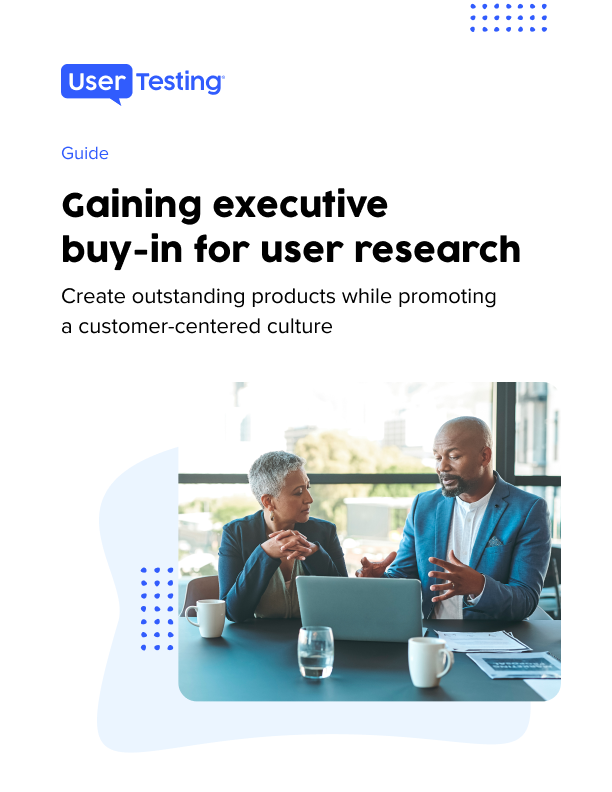
Why patient and consumer insights matter to healthcare executives

Consumers today emphasize health and wellness more, yet are increasingly frustrated with healthcare systems. The pressure is on to innovate fast, but with such high patient demands, healthcare leaders must juggle patient-centricity with record inflation, supply chain issues, persistent labor shortages, and technology disruptors.
In its Consumer Health Insights survey, McKinsey & Company found most people want their healthcare experience to mirror the same level of service and customer care they enjoy elsewhere when doing things like paying bills online, ordering food delivery, or doing their taxes.
To meet customers where they are and continue to focus on the bottom line, healthcare systems and their executives must focus more on patient and consumer insights—and then use those insights to improve the patient experience.
What can healthcare executives do with quantitative insights?
Quantitative research is all about numbers—expressing data as quantities, amounts, and ranges. Such research spans various levels in healthcare systems. For instance, quantitative insights might include blood sugar or temperature measurements at the patient level. At the service level, it might include wait times. At the organization level, it might include staff experience and budgets. And at the population level, it might include statistics like birth or mortality rates.
With quantitative insights, healthcare executives have the data they need for strategic planning, quality-of-care assessments, and other initiatives. For example, strategic planning becomes more precise and effective as executives use quantitative insights to identify trends, forecast patient volumes, and allocate resources.
Those insights translate into better patient experiences as healthcare executives become more adept at predicting patient outcomes, analyzing readmission rates, responding to the threat of infections, measuring patient satisfaction, and making other data-driven decisions. The result is more exceptional patient care, as their providers have the data they need to stay agile in response to patient needs.
What are quantitative healthcare metrics?
Within the healthcare industry, quantitative healthcare metrics help evaluate the performance and quality of an organization’s processes and services. Using data as a guide, healthcare leaders can make better-informed decisions, identify ways to improve the patient experience and track their progress over time. Standard metrics in healthcare might include:
- Clinical outcomes focused on the effectiveness of treatments and interventions related to mortality rates or specific diseases
- Patient satisfaction with wait times, communication, the responsiveness of their healthcare providers, and other patient experience metrics
- Revenue, expenses, margins, ROI, and other metrics that gauge an organization’s financial health
- Bed utilization, appointment scheduling, resource allocation, and other operational metrics
- Population data that measures disease rates, vaccination adherence, and health disparities among demographic groups
Think of quantitative healthcare metrics as a data-driven foundation for informed decision-making. By tapping into patient and consumer insights, healthcare organizations can become better equipped to enhance patient care, streamline operations, and fine-tune healthcare services and outcomes.
What can healthcare executives do with qualitative insights?
Conversely, qualitative research relies on observations and recordings of a population rather than numbers. For example, healthcare qualitative insights include asking patients about their experiences visiting a hospital immunization clinic, with questions centered on the ease of making appointments, wait times, and interactions with healthcare providers. Such qualitative insights offer a more nuanced understanding of patient experiences, behaviors, and perceptions.
Healthcare executives leverage HIPAA-compliant insights to understand better the human aspects of care delivery and organizational dynamics. These insights also allow executives to identify bottlenecks in communication, service gaps, and improvement opportunities.
When healthcare executives are willing to listen to patient feedback, they can use these insights to improve patient experiences, shape policies, create training programs for staff, and strengthen the organization.
What are qualitative healthcare metrics?
Gathering qualitative insights is all about grasping the emotional, psychological, cultural, and social factors that impact the patient experience. Common metrics might include:
- Patient surveys to gather narratives and feedback to identify pain points, preferences, and opportunities to improve patient-centered care
- Moderated and unmoderated usability tests and patient and consumer interviews
- Staff surveys on their perspectives and challenges to improve the patient experience and overall work environment
- Unmoderated and moderated focus group discussions to explore topics in-depth with a select patient group and analyze group dynamics and shared experiences
- Waiting room observations to discern patient sentiment
- Patient reviews, social media posts, and other online feedback to extract patient and consumer insights
Qualitative healthcare metrics provide a holistic view of the human side of healthcare, allowing executives to make patient-centered decisions, foster empathy, and design strategies that resonate with patients and staff.
Increase the ROI of patient insights and empathy by sharing insights
Patient and consumer insights derived from quantitative and qualitative research can drive ROI for healthcare organizations while improving patient satisfaction and willingness to seek care. With nearly one-fourth of U.S. consumers electing to defer care rather than engage with healthcare systems, healthcare decision-makers need to tap into the potential of patient data and use it to pivot toward greater patient satisfaction within their experiences.
Realizing this potential requires a strategic approach to research and sharing insights. Below, we’ve outlined some key ways teams can emphasize the dissemination of insights within their organizations.
1. Sharing with healthcare executives
Sharing patient and consumer insights directly with healthcare executives is essential to aligning organizational strategies with patient needs and expectations. When they have the complete picture of quantitative and qualitative data, healthcare executives are more likely to recognize the potential for ROI and take action. Consider the benefits of sharing research with healthcare executives:
- Executives can use patient insights to make decisions that promote patient-centered care, operational efficiency, and resource allocation
- Patient insights inform long-term strategic planning by identifying trends, opportunities, and areas for improvement
- Sharing insights with executives allows for developing patient engagement strategies that address specific pain points and preferences
- Executives can launch initiatives to improve the patient experience, resulting in better patient outcomes, reduced healthcare costs, and innovative solutions that cater to unmet needs
2. Sharing with stakeholders
Sharing patient insights with stakeholders beyond the executive level is crucial for garnering support, fostering collaboration, and ensuring the organization prioritizes patient-centered approaches. Stakeholders include clinical teams, administrative staff, board members, and external partners. The following benefits highlight the significance of sharing insights with stakeholders:
- Clinical and administrative teams are more likely to work toward common patient-centered goals
- A solutions-oriented, patient-centered mindset becomes commonplace as stakeholders collaborate on projects, initiatives, and strategies
- Stakeholders become accountable for addressing patient concerns and participating in initiatives that enhance patient care and experiences
- Board members have the information they need to make informed decisions about investments, resource allocation, and strategic direction
3. Sharing across the healthcare organization
Sharing patient insights throughout the healthcare organization fosters patient-centered care and continuous improvement. Every staff member, regardless of their role, plays a role in shaping patient experiences. By building a culture that values patient insights, healthcare organizations can achieve the following benefits:
- Staff members from all departments can contribute to delivering a consistent and positive patient experience. Empowered staff members are more likely to advocate for patient needs and provide high-quality care
- Patient insights encourage staff to learn, adapt, and improve their practices continuously.
- Sharing insights promotes open communication channels, allowing staff to share observations, concerns, and innovative ideas
Indeed, sharing patient and consumer insights throughout organizations has the potential to bring together great minds committed to improving the patient experience. Additional McKinsey & Company research finds that 75% of respondents to its Consumer Health Insights survey want a combination of digital solutions for monitoring their health and personalized experiences tailored to their individual needs.
Such a feat requires sharing insights with various types of talent, from developers to customer service representatives. Sharing patient and consumer insights across teams gets everyone on board with making empathetic decisions that move the needle for the patient.
Bring patient perspectives to healthcare innovation
Proving the ROI of patient and consumer insights starts with a commitment to gathering quantitative and qualitative data across various metrics—and then sharing these insights strategically with healthcare executives, stakeholders, and the entire organization.
By demonstrating the tangible benefits of improved patient experiences and organizational alignment, healthcare organizations can solidify the value of patient insights in driving positive outcomes and fostering a patient-centered healthcare environment.
Incorporating patient and consumer insights into healthcare decisions is as essential as obtaining customer feedback for products and services. With dedicated research experts, UserTesting enhances the speed, quality, and impact of patient experience programs, allowing healthcare organizations to outsource entire projects or ongoing research for expanded capabilities.
In this Article

What's next
What's next





